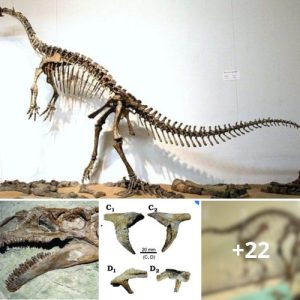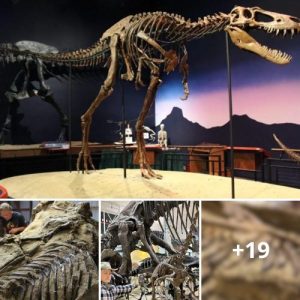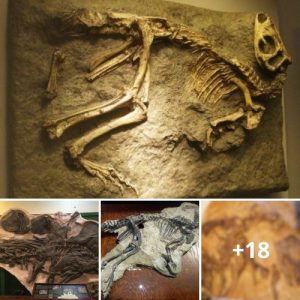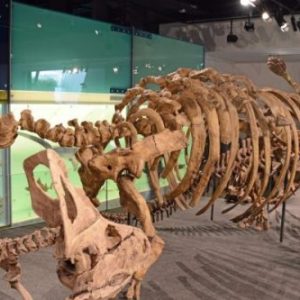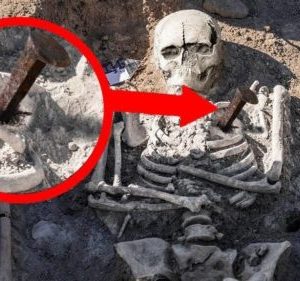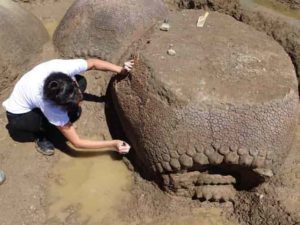
In the world of paleontology, astonishing discoveries can occur in the unlikeliest of places. One such remarkable find transpired in the vast Argentine pampas, where a diligent farmer stumbled upon the fossilized remains of a colossal creature. This awe-inspiring discovery has provided scientists with invaluable insights into Earth’s prehistoric past. In this article, we delve into the fascinating story of how a car-sized ancient armadillo, the Glyptodon, was unearthed and the significant implications it holds for our understanding of the natural world.
A Farmer’s Fortuitous Find
It was a typical day for farmer Juan de Dios Sota when he decided to dig a new well on his property, nestled within the fertile plains of La Pampa, Argentina. Little did he know that his routine chore would lead to a monumental discovery that would capture the imagination of scientists worldwide.
As Mr. Sota’s shovel struck an object buried deep beneath the earth’s surface, he quickly realized that he had unearthed something extraordinary. To his amazement, the colossal fossil was revealed to be a near-complete skeleton of an ancient armadillo, unlike anything he or the scientific community had ever seen before.
Glyptodon: The Prehistoric Giant
The colossal creature discovered by Mr. Sota turned out to be a Glyptodon, a prehistoric mammal that lived during the Pleistocene epoch, approximately 2.5 million to 10,000 years ago. Glyptodons were part of the Glyptodontidae family, distant relatives of modern armadillos. However, these ancient beasts differed significantly from their contemporary cousins.
One of the most remarkable features of Glyptodons was their size. They were the largest known glyptodonts, with some species reaching lengths of up to 11 feet and weighing as much as a small car. This colossal size provided Glyptodons with a formidable defense mechanism – a bony carapace, resembling a massive turtle shell, that covered their entire bodies.
This protective armor made Glyptodons formidable opponents for any predator that dared to challenge them, and their herbivorous diet ensured they had the bulk to match their defensive capabilities. The discovery of a nearly complete Glyptodon skeleton in Argentina sheds light on the physiology and behavior of these magnificent creatures.
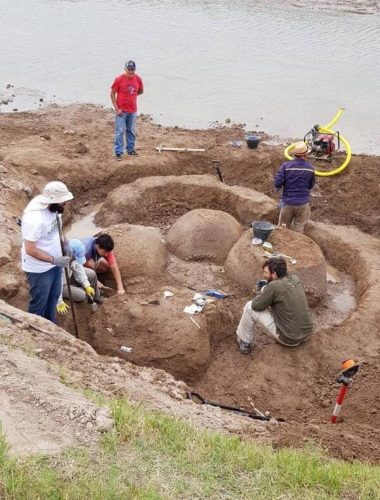
Unlocking the Mysteries of the Past
The unearthing of a near-complete Glyptodon skeleton is a once-in-a-lifetime find for paleontologists and scientists. It presents an invaluable opportunity to gain insights into the life, evolution, and eventual extinction of this enigmatic creature.
Studying the well-preserved fossil will provide answers to several crucial questions:
Diet and Habitat: Examination of Glyptodon teeth and bone structure can reveal valuable information about their diet and preferred habitats. Did they graze in grasslands, munch on shrubs, or forage in forests?
Interaction with Humans: Were Glyptodons hunted by early humans? The presence of tool marks on the fossils could help researchers piece together the relationship between humans and these giant armadillos.
Climate and Environment: The Glyptodon’s remains could provide data on the climate and environmental conditions of the region during their existence. This, in turn, may help us better understand past climate patterns and their impact on megafauna.
Evolution and Extinction: By analyzing the Glyptodon’s anatomy and comparing it to other glyptodonts, scientists can gain insights into their evolutionary history and the possible factors contributing to their eventual extinction.
Scientific Significance
The discovery of this car-sized Glyptodon is not just a testament to the unceasing curiosity of individuals like Juan de Dios Sota but also to the vital role of citizen scientists in the field of paleontology. Sota’s find underscores the potential for groundbreaking discoveries to occur in unexpected places, driven by the enthusiasm of those who seek to understand the past.
The fossil’s excavation and subsequent scientific analysis promise to contribute substantially to our knowledge of Earth’s prehistoric inhabitants and the ecosystems in which they thrived. Additionally, this discovery serves as a reminder of the importance of preserving the natural heritage of our planet and the need for ongoing efforts to safeguard fossils and historical sites.
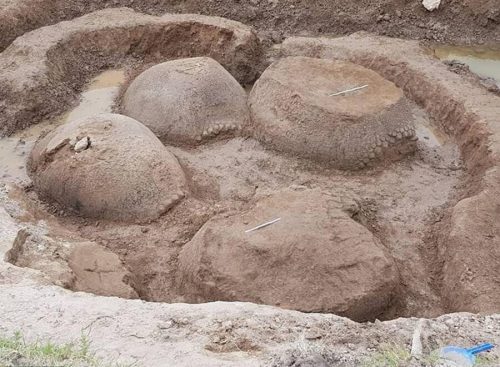
The accidental discovery of a car-sized Glyptodon by a diligent farmer in Argentina has rekindled our fascination with the Earth’s ancient past. This remarkable find provides a unique opportunity for scientists to unlock the mysteries surrounding these prehistoric giants, shedding light on their dietary habits, interactions with early humans, and the environmental conditions of their time. It also highlights the invaluable contributions of citizen scientists and underscores the importance of preserving our planet’s natural history for future generations. As the scientific community delves deeper into the study of this colossal armadillo, the world eagerly awaits the fascinating revelations that are sure to emerge, further enriching our understanding of Earth’s remarkable history.

